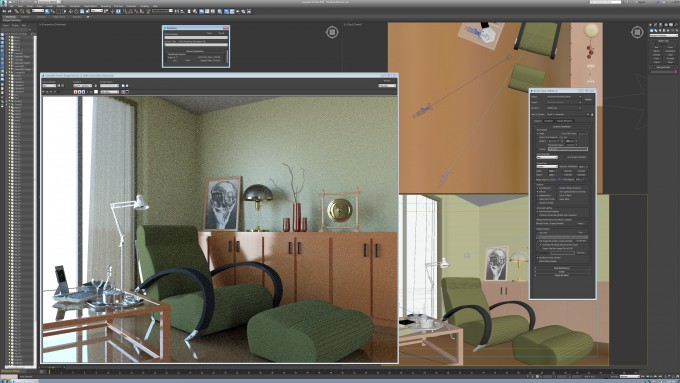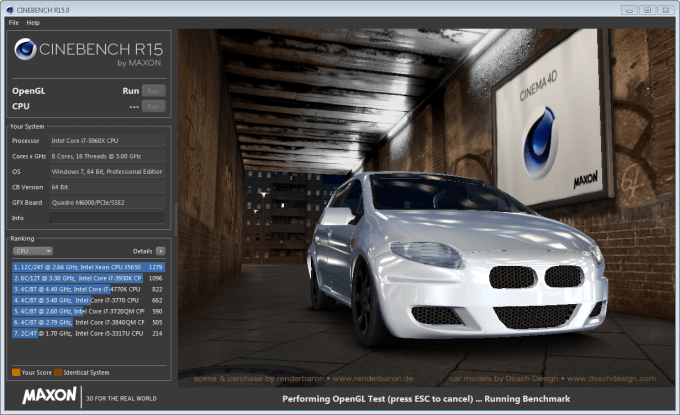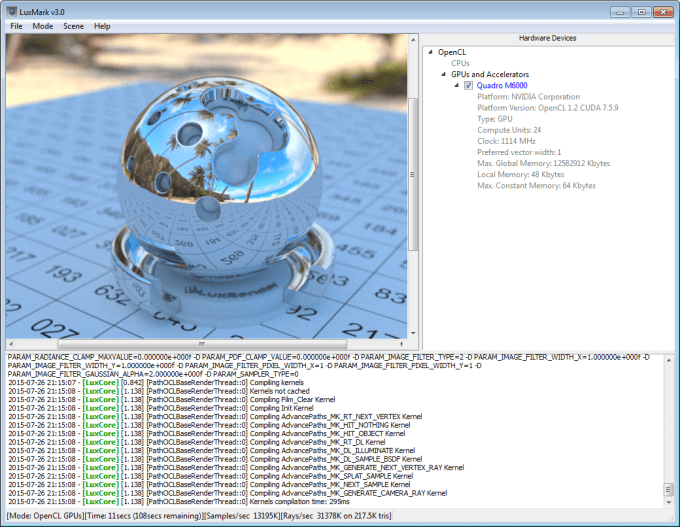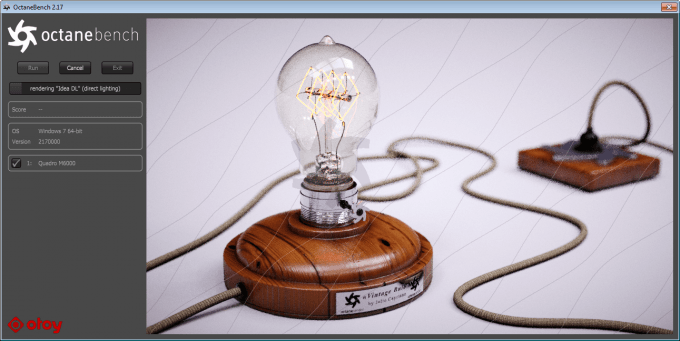- Qualcomm Launches Snapdragon 4 Gen 2 Mobile Platform
- AMD Launches Ryzen PRO 7000 Series Mobile & Desktop Platform
- Intel Launches Sleek Single-Slot Arc Pro A60 Workstation Graphics Card
- NVIDIA Announces Latest Ada Lovelace Additions: GeForce RTX 4060 Ti & RTX 4060
- Maxon Redshift With AMD Radeon GPU Rendering Support Now Available
Maxwell Quadro For All: NVIDIA Quadro M2000 Workstation Graphics Card Review

To those who’ve been waiting for a mid-range Maxwell Quadro to come along: your wait is over. To help wrap up its Maxwell-based lineup, NVIDIA’s Quadro team has released the ~$500 M2000. This card is largely targeted at CAD users and those with lighter 3D design needs, and promises to be much more efficient – and faster overall – than its predecessor. We gave the card a thorough test to see just how true that is.
Page 2 – Rendering: Autodesk 3ds Max, OctaneBench, LuxMark & Cinebench
Autodesk 3ds Max 2016
Our 3ds Max testing utilizes a recent version of the suite, and with it, we render two complex scenes: a furnished room (2400×1200), and an Audi vehicle (2000×1500). Both renders make good use of NVIDIA’s Iray renderer, so we chose to go with the iterative rendering option, limiting each scene to 2,500 iterations. For most scenes, that’s not going to result in production quality, but it’s more than suitable for the purposes of benchmarking.
I should note that results from AMD’s FirePro W4300 are not included here as this particular test revolves around Iray. AMD recently released an Iray competitor, called FireRender, but I have been unable to experiment much with it up to this point.
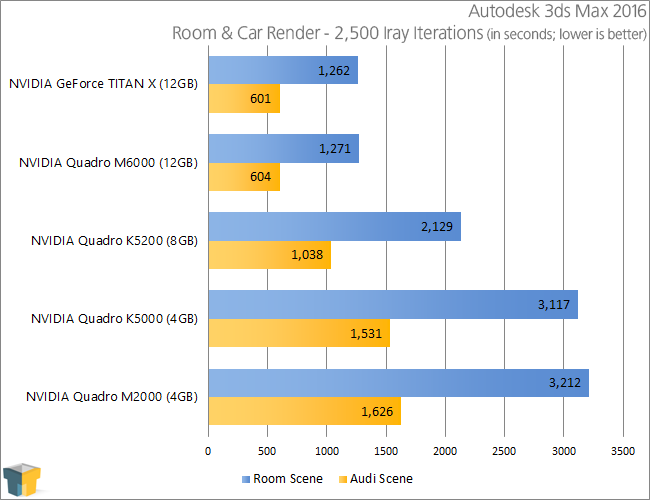
The M2000 is the weakest performer in this lineup, but that’s not a surprise given it’s the lowest-end Quadro we’ve tested with. As mentioned earlier, the M2000 is performance-comparable with the K5000, which cost more than 4x as much when it was released in 2012. All things considered, the M2000 offers good performance, although it doesn’t hold a candle to the high-end cards (including the Kepler-based K5200), as you’d expect.
Synthetic: Cinebench, Octane & LuxMark
To compare our collection of WS GPUs across other renderers, we rely on Cinebench, Octane, and LuxMark. The latter is of particular interest as it renders using OpenCL. It also happens to be so good at what it does that we opt to use it for the sake of generating peak temperature and power information.
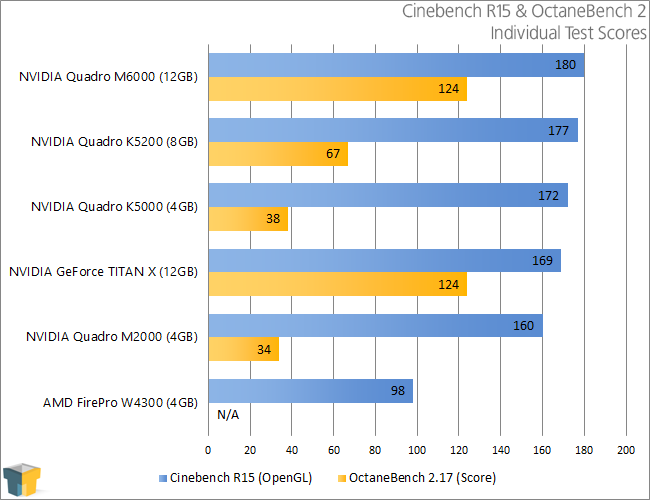
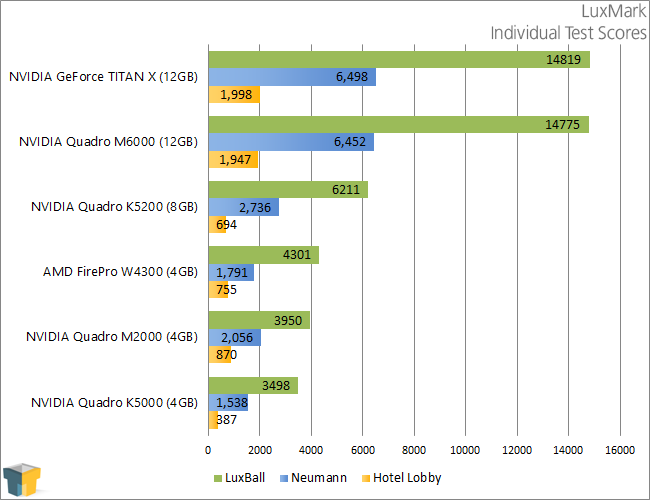
Because OctaneBench requires CUDA to run, AMD’s FirePro W4300 had to sit that one out. Looking past that, we can see that the M2000 continues to fall short of the K5000, which was released as a high-end card when it first came out, while the OpenGL performance in Cinebench is fairly close to the cards above it. The M2000 managed to slaughter the W4300 in that particular test.
In LuxMark, an interesting result surfaces. AMD’s W4300 managed to beat out the M2000 in the LuxBall test, but it fell short with the other two. Still, both cards offer very comparable performance overall, but ultimately AMD would get the nod as its offering costs at least one hundred dollars less.
Support our efforts! With ad revenue at an all-time low for written websites, we're relying more than ever on reader support to help us continue putting so much effort into this type of content. You can support us by becoming a Patron, or by using our Amazon shopping affiliate links listed through our articles. Thanks for your support!




